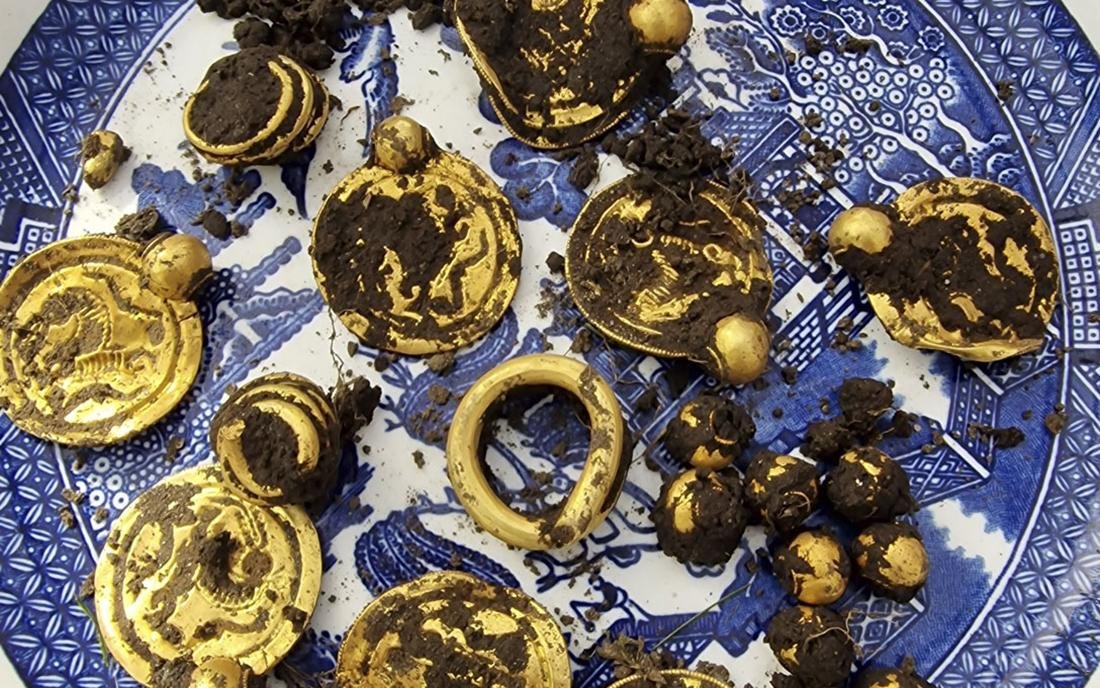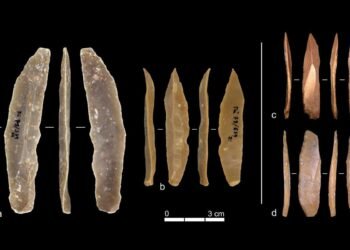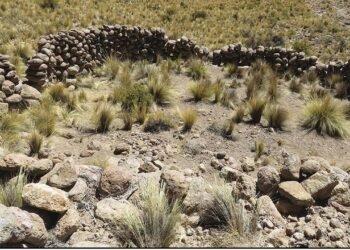In a discovery hailed as “Norway’s gold find of the century,” Erlend Bore, a 51-year-old Norwegian metal detectorist, stumbled upon a treasure trove of gold jewelry on the island of Rennesøy, near Stavanger, Norway.

This remarkable find, which comprises nine gold pendants adorned with rare horse symbols, three gold rings, and ten gold pearls, dates back to the 6th century CE.
Mr. Bore, who had recently purchased a metal detector to stay active on the recommendation of his doctor, made the astonishing discovery while exploring the island with the landowner’s consent.
The treasure, weighing just over 100 grams, appears to have been meticulously crafted by skilled jewelers of the time. While resembling gold coins, the pendants are known as “bracteates” and were primarily used as ornamental jewelry.
What sets this discovery apart is the presence of a horse motif on the medallions, a unique design seldom seen in similar finds. In Norse mythology, such symbols typically depict Odin healing a horse belonging to his son, symbolizing renewal and resurrection, offering protection and good health to the wearer.
However, in this case, only the horse is depicted, with its tongue hanging out and exhibiting signs of injury. This representation signifies illness and distress, along with the hope for healing and new life, akin to the Christian symbol of the cross.
These gold bracteates, from a time known as the Migration Period (400-550 CE), hold exceptional historical and cultural significance. The archaeological community has lauded this find, with Ole Madsen, Director of the Museum of Archaeology at the University of Stavanger, describing it as “the gold find of the century in Norway.”
Håkon Reiersen, an associate professor at the Museum of Archaeology, believes that such a treasure might have been hidden during a period of crisis, marked by crop failures, deteriorating climate, and plagues.
As per Norwegian law, Mr. Bore and the landowner will receive a finder’s fee for their discovery, to be determined by the Norwegian Directorate for Cultural Heritage. Objects predating 1537 and coins dating prior to 1650 are considered state property and must be reported to the authorities.
Marianne Enoksen, Head of the Cultural Heritage Department in Rogaland County Municipality, emphasized the importance of such finds as part of our shared cultural heritage. Dagfinn Skre, a Professor of archaeology at the Museum of Cultural History in Oslo, praised the uniqueness of the discovery, particularly due to the consistent depiction of the horse motif on all nine bracteates.























